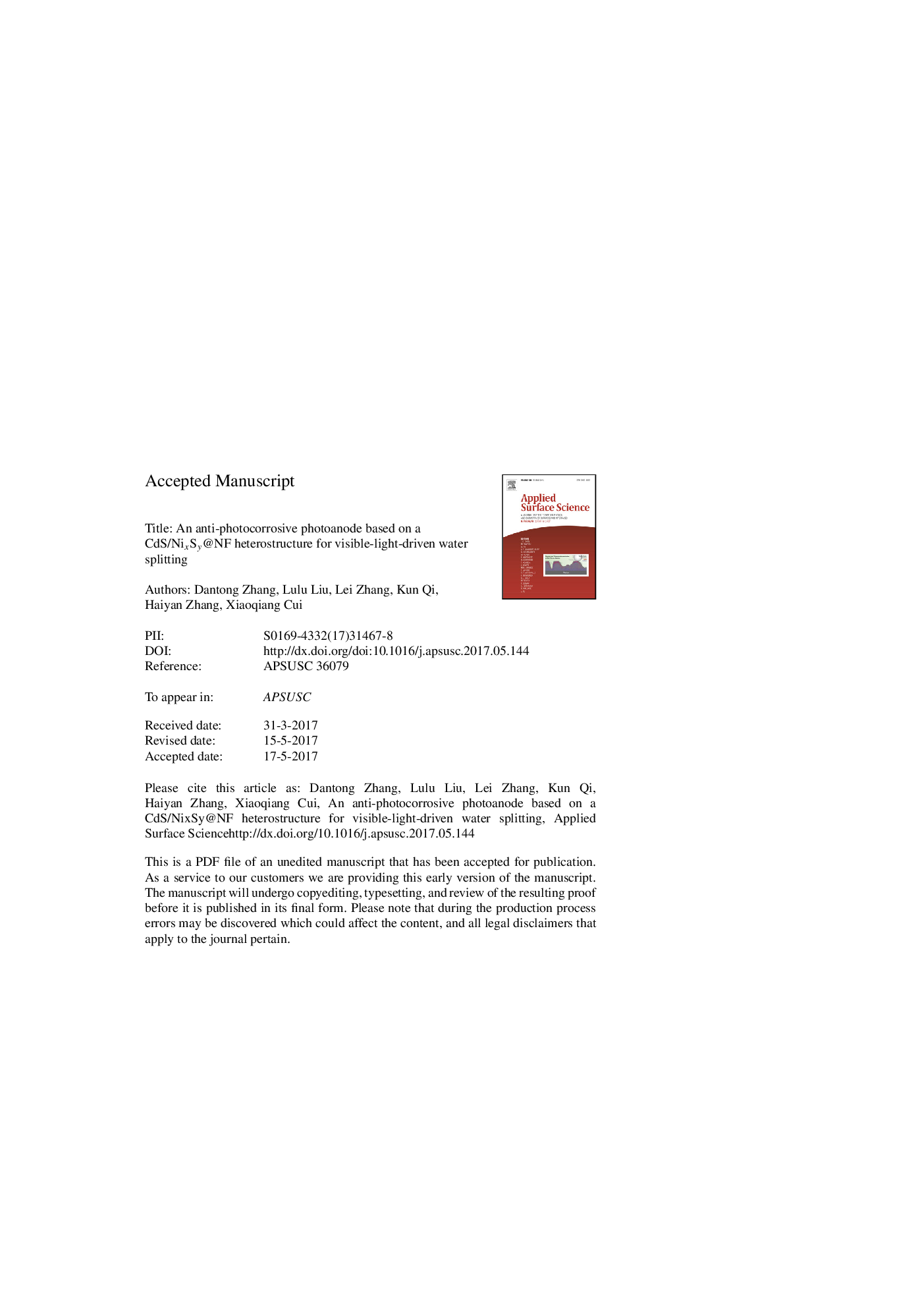| Article ID | Journal | Published Year | Pages | File Type |
|---|---|---|---|---|
| 5351674 | Applied Surface Science | 2017 | 18 Pages |
Abstract
Photoelectrochemical (PEC) water splitting holds promise for both sustainable energy generation and energy storage. CdS, a sulphide semiconductor possessing a narrow band gap (2.4Â eV) and high photocatalytic activity, has been widely used to build photoanodes for PEC water splitting; however, it also suffers from photocorrosion under irradiation. An innovative method is presented here to significantly improve the stability of CdS photoanodes by constructing a p-n junction comprising CdS/NixSy on nickel foam (NF) via a one-pot hydrothermal method. The n-type CdS is surrounded by p-type NixSy serving as a fast and effective hole receiver of excess holes from CdS. More importantly, the CdS/NixSy shows significantly improved PEC stability compared to the pure CdS electrode, with â70% of the initial photocurrent retained after 2000Â s of irradiation (>420Â nm). This work provides a new insight into the fabrication of other p-n junction self-assembled photoanodes to simultaneously enhance charge separation and transport for efficient and stable solar fuel production.
Related Topics
Physical Sciences and Engineering
Chemistry
Physical and Theoretical Chemistry
Authors
Dantong Zhang, Lulu Liu, Lei Zhang, Kun Qi, Haiyan Zhang, Xiaoqiang Cui,
